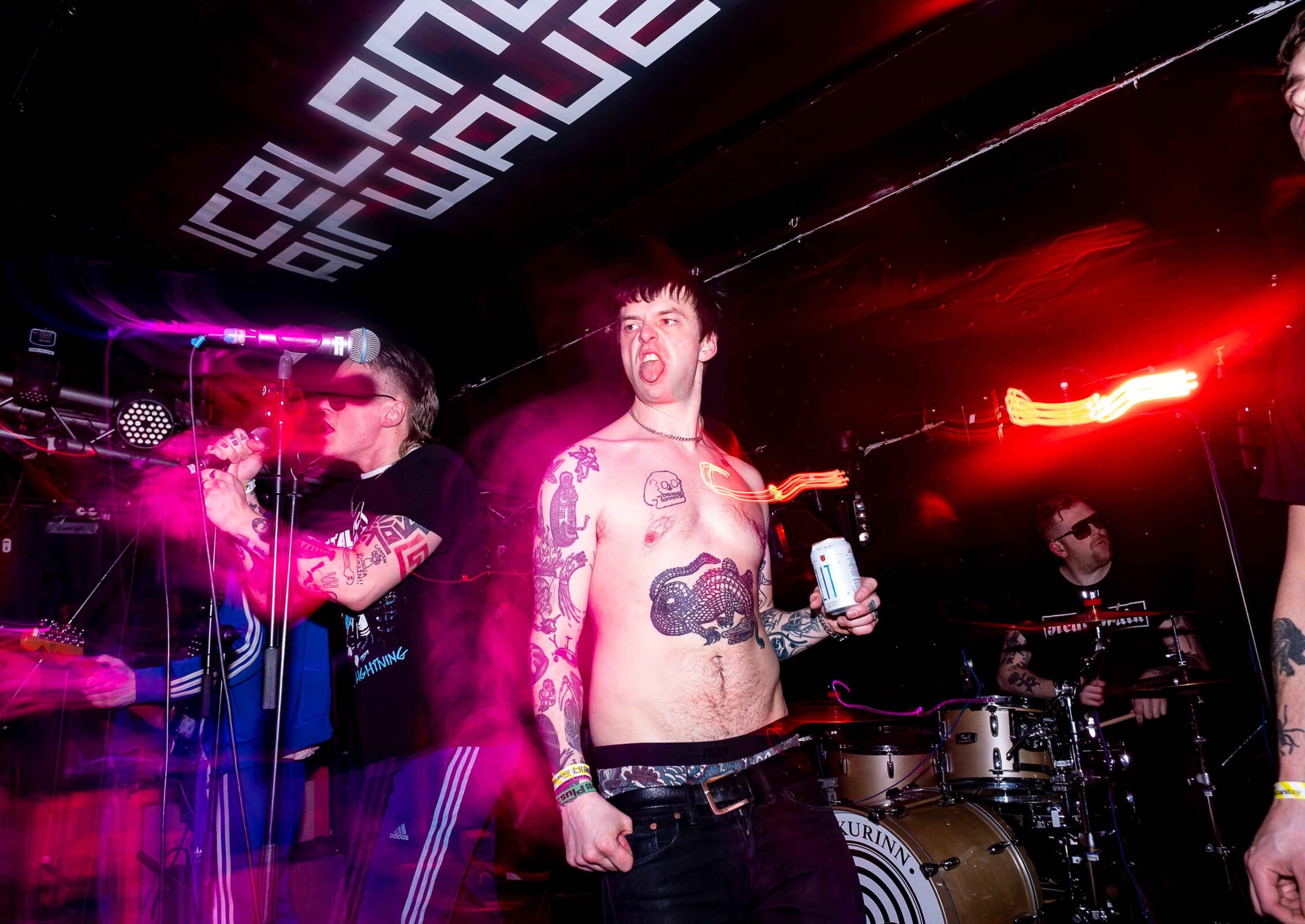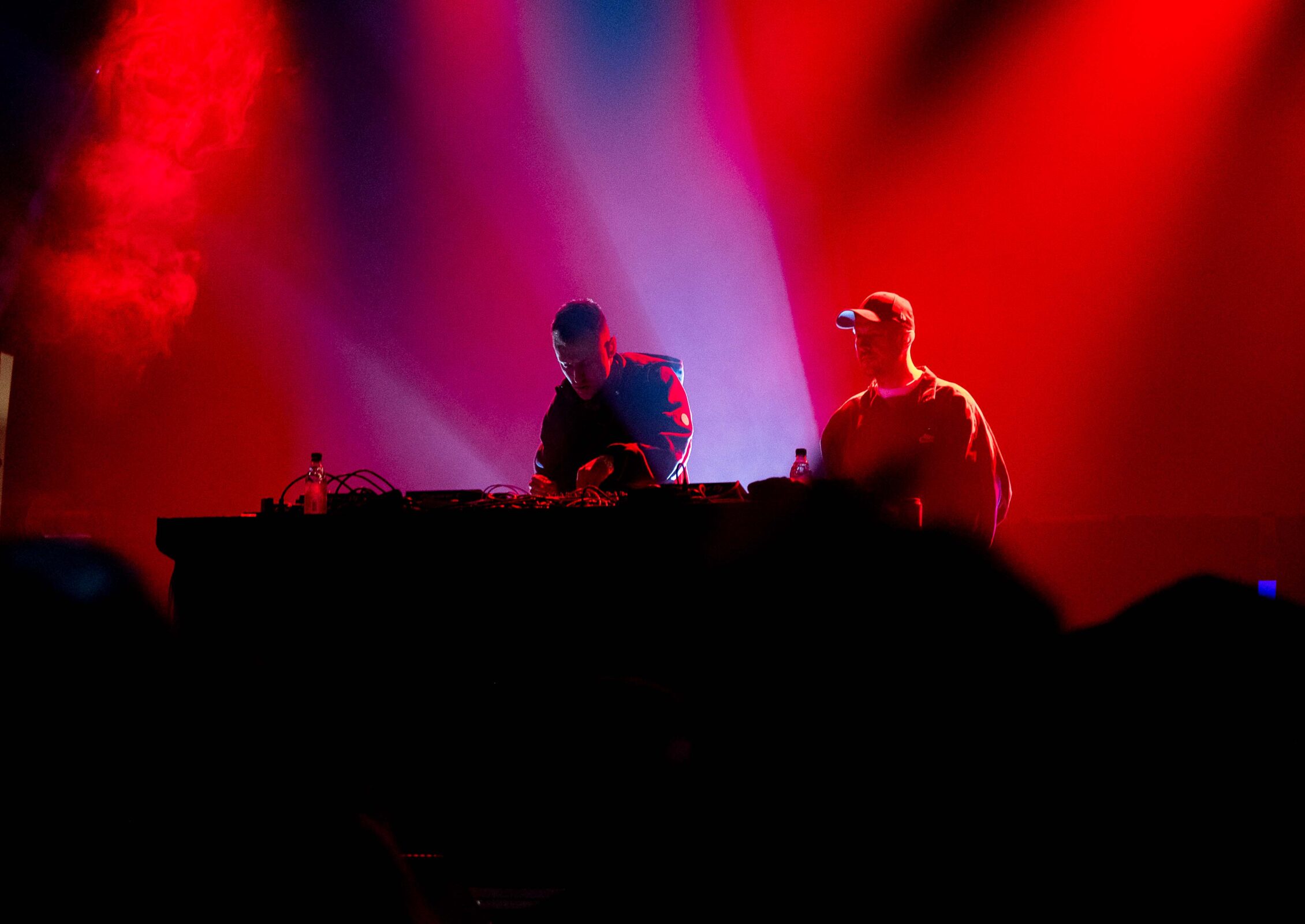- Words Notion Staff
- Photography Joana Fontinha
Ahead of Iceland Airwaves hitting Reykjavík this winter, we sit down with general manager Ísleifur Thorhallsson to talk Gen Z audiences, protecting small venues and why festivals are more than just a music event.
For over two decades, Ísleifur Thorhallsson has been at the heart of Iceland’s live music scene, pulling strings behind some of the country’s most unforgettable moments. As founder and CEO of Sena Live, he’s been responsible for staging everything from global icons like Ed Sheeran and Justin Timberlake to homegrown heroes like Björk, Sigur Rós and Laufey. But his work doesn’t stop at blockbuster concerts; he’s also the man steering Iceland Airwaves, the Reykjavík festival that’s become a global tastemaker across its 25-year history.
Since taking over as festival manager in 2018, Ísleifur has helped Airwaves evolve while keeping its DNA intact: showcasing new talent, celebrating Iceland’s creative community, and drawing fans from all over the world to the country’s capital every November. From safeguarding grassroots venues to launching the Airwaves Exchange, Ísleifur is just as concerned with nurturing the next Laufey as he is with booking international headliners. This year’s edition doesn’t just spotlight rising artists, it rethinks the future: a refreshed conference program tackling Gen-Z habits, artist rights and the “State of Live” itself.
Before it arrives this November, we sat down with Ísleifur to talk protecting the ecosystem, putting Reykjavík on the map, and why the festival is more than just a music event.

- Photography Joana Fontinha
This year’s Iceland Airwaves features a refreshed conference program tackling the future of live music, artist rights, and Gen-Z audience trends. From your vantage point, what is the most urgent conversation the music industry should be having right now?
The industry is constantly changing. From technological shifts, new audience behaviours, to rapidly changing political climates, all at the same time. Our “State of Live” panel brings all of that into one conversation. Every change eventually hits the live sector, so this is where we reflect on what’s happening now and imagine what comes next. For me, the most urgent conversation is about protecting the grassroots. Small venues, indie promoters, and local festivals are struggling globally, yet this is exactly where the next generation of headliners comes from. If we don’t keep that ecosystem alive, the whole chain breaks.
You’ve been a driving force in Iceland’s live music scene for over two decades. How do you balance nurturing homegrown talent with the global pull of international headliners – and has that balance shifted in recent years?
In broad strokes, Icelandic audiences come to Airwaves to see international acts, while visitors from abroad come to discover Icelandic ones. Some people chase the big names, others are here for the unknown gems, and together it creates this unique mix. It’s like running several mini-festivals inside one big one, always fine-tuning the balance. Having major live shows year-round gives us room to shine a bigger spotlight on local artists during Airwaves itself. We also integrate them into our biggest moments, whether it’s putting local acts as support for international headliners or collaborating with Reykjavík’s creative community, so they own a piece of the festival week.
The Iceland Airwaves Exchange with other international festivals is a unique initiative. What inspired this cultural bridge, and what has surprised you most about how Icelandic artists are received abroad?
Iceland may be small, but the talent here is huge. At home, it’s hard for a new act to draw a massive crowd; our population is simply too small. That’s why it’s so powerful to watch international audiences go wild for Icelandic music at showcase festivals abroad. There’s something distinctive in the sound, maybe it’s the influence of our nature, maybe it’s the mystique of the place, but it connects. When we had the chance to evolve our Plus Awards into an official exchange program with other festivals, we jumped at it. Touring internationally can be expensive and daunting, so anything we can do to open doors. Whether that’s funding, connections, or stage time, is worth doing.
Iceland Airwaves has always been more than a festival – it’s a showcase of place and culture. How intentional are you about using unconventional venues like churches, bookstores, and art spaces to shape the identity of the festival?
In Iceland, nearly everyone has a creative side; it’s part of the DNA here, so booking shows in unconventional spaces just feels natural. Airwaves is first and foremost about music, but Reykjavík’s cultural life is so rich that we want to weave it into the experience wherever we can. For a lot of visitors, this is a once-in-a-lifetime trip. We want them to leave not only having seen amazing shows, but feeling like they’ve experienced the city’s creative heartbeat in unexpected places.
With Reykjavík transforming into a multi-venue playground each November, how do you ensure the city’s local heartbeat isn’t overshadowed by the scale and international presence of the festival?
The beauty of Airwaves is that the whole city gets involved. Dozens of downtown spaces become ‘off-venues’ during the week, hosting their own free daytime shows and curating their own lineups. You could wander from a punk gig in a record shop to an acoustic set in a bookstore to a DJ set in a museum, all in a single afternoon. We also work closely with partners like Business Iceland and the City of Reykjavík to make sure the festival’s international buzz benefits the local community as much as possible.
You’ve brought global megastars like Ed Sheeran and Justin Timberlake to Iceland, but Iceland Airwaves seems to thrive on intimate, emerging moments. How do you personally define a ‘successful’ show – is it size, cultural impact, or something else entirely?
It’s simple: if the artist leaves happy and the audience leaves happy, it’s a success. That means making the right booking for the right venue, but also making sure the backstage is just as good as the front-of-house. If the artist feels safe, cared for, and excited, they’ll give everything on stage. The crowd feels that, sends it back, and suddenly you’ve got this electric loop of energy that makes the night unforgettable.
Post-pandemic, festivals worldwide have had to rethink sustainability – not just environmental, but also economic and cultural. How has Iceland Airwaves evolved in this regard? Are there new models you’re exploring?
Post-COVID, we scaled back, tested the waters, read the room. Audience habits had shifted, and music consumption had shifted. Now, we feel the appetite to go big again. Bigger bookings, more venues, and more room for Icelandic artists to showcase themselves. We’re especially focused on re-engaging younger audiences who might have missed that bigger, more ambitious festival experience.
Iceland has produced globally renowned artists like Björk and Sigur Rós, yet the next wave seems more genre-fluid and experimental. What excites you about the current generation of Icelandic musicians, and where do you see the scene heading?
The unpredictability is exactly what excites me. The scene here is always evolving, always surprising. And then there’s Laufey, who’s rewriting the rules entirely: blending jazz, vintage style, and modern pop into something totally fresh. No one saw that coming, yet she’s become the biggest Icelandic star ever. That’s the magic of this place, you never quite know what’s next.
The conference’s focus on Gen-Z raises an interesting question: how is this generation reshaping live music in Iceland? Are they harder to reach, or simply demanding a different kind of experience?
Gen-Z lives in a totally different musical ecosystem. It’s never been easier to release music and reach people, and never been harder to hold their attention. For us, the question is: how do we make them feel that Airwaves is their festival too? That’s why we’re bringing them into the conversation at the conference. We want to hear from them directly.
As someone who’s worn both hats – festival director and promoter of major stadium shows – what are the unique pressures and freedoms that come with curating Iceland Airwaves compared to commercial arena tours?
Airwaves comes with far more stakeholders, expectations, and opinions. It’s like running a public institution; everyone feels some ownership, and they’re not shy about sharing their views. We see that as a positive. Airwaves is a cultural landmark with a 25-year history, and we treat it like something we’ve been entrusted with. We’re lucky that Icelandic music continues to attract global attention and that the festival’s reputation makes it an easy “yes” for artists around the world.

- Photography Joana Fontinha
Looking back at the 25-year history of Iceland Airwaves, what’s a lesser-known story or pivotal moment that, in your view, truly shaped the festival?
The defining thread isn’t one moment; it’s that Airwaves is where you see artists just before they break out. For Icelandic acts, it’s often a key step on their path to global stages. For international artists, we have countless stories of acts playing a tiny room here, then moving on to arenas within a year or two. Fontaines D.C. is a recent one; they played a 240-cap room here just a couple of years ago.
Finally, with the world’s attention on Reykjavík each November, what do you hope people take away – not just about the festival, but about Icelandic music and culture as a whole?
That this festival could only happen here, in downtown Reykjavík, framed by Iceland’s nature, and powered by a music scene unlike anywhere else in the world.

